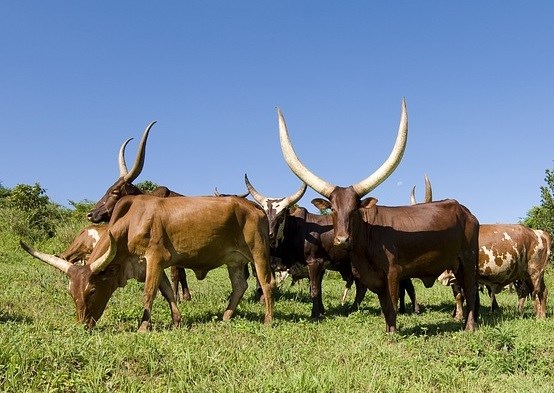Contact
Susanna Sternberg Lewerin
Professor at the Department of Biomedical Science and Veterinary Public Health; Division of Bacteriology and Food Safety
Telephone: +4618673192
E-mail: susanna.sternberg-lewerin@slu.se

Infectious diseases are an important obstacle to high productivity in Ugandan cattle production. General disease prevention is particularly important in low-income countries, where veterinary services and adequate treatment regimens for many infectious diseases are insufficient. Improved biosecurity could lead to improved animal health and production with lower mortality and better reproductive rates. Any sustainable biosecurity interventions must be feasible for the farmers, from a practical as well as social and cultural aspect. An understanding of the farmers' view of biosecurity and the diseases it is intended to prevent is also needed.
The aim of the study was to explore the perceived needs of Ugandan cattle farmers as regards disease prevention, tools and strategies for improved biosecurity, and to assess the feasibility of basic biosecurity practices, in order to contribute to long-term strategies for improved livestock management. We conducted two rounds of focus group (FG) discussions about infectious diseases and biosecurity with cattle farmers in the districts Kabarole, Kamwenge and Kasese in western Uganda.
A thematic analysis revealed four organising themes: Disease prevention and biosecurity practices, Knowledge among farmers and other actors, Community and peer pressure and Services and infrastructure. From these four organising themes, a global theme of "Biosecurity is a common effort based on collective knowledge" could be derived. Diseases represent a loss of income and wealth for farmers. Lack of knowledge, training and education among farmers were seen as a challenge. While there were claims during the first round of FGs that many biosecurity measures would be impossible to practise, in all follow-up FGs at least someone had tried. Perceived barriers for implementing biosecurity were financial and cultural. Experiences that were shared were that practising biosecurity measures had made their cattle healthier, but it also incurred extra costs.
The perceived needs of farmers that emerged include knowledge, access to veterinary services, resources and community involvement for a broader implementation of basic biosecurity. There is potential for improved cattle production by educating farmers about infectious diseases and disease prevention measures. Such training should be participatory, involve communities and encourage participants to overcome practical and cultural obstacles.
https://doi.org/10.1186/s12917-019-1961-2
C Wolff, S Abigaba and S Sternberg Lewerin. Ugandan cattle farmers' perceived needs of disease prevention and strategies to improve biosecurity. BMC Veterinary Research (2019) 15:208.
Susanna Sternberg Lewerin
Professor at the Department of Biomedical Science and Veterinary Public Health; Division of Bacteriology and Food Safety
Telephone: +4618673192
E-mail: susanna.sternberg-lewerin@slu.se